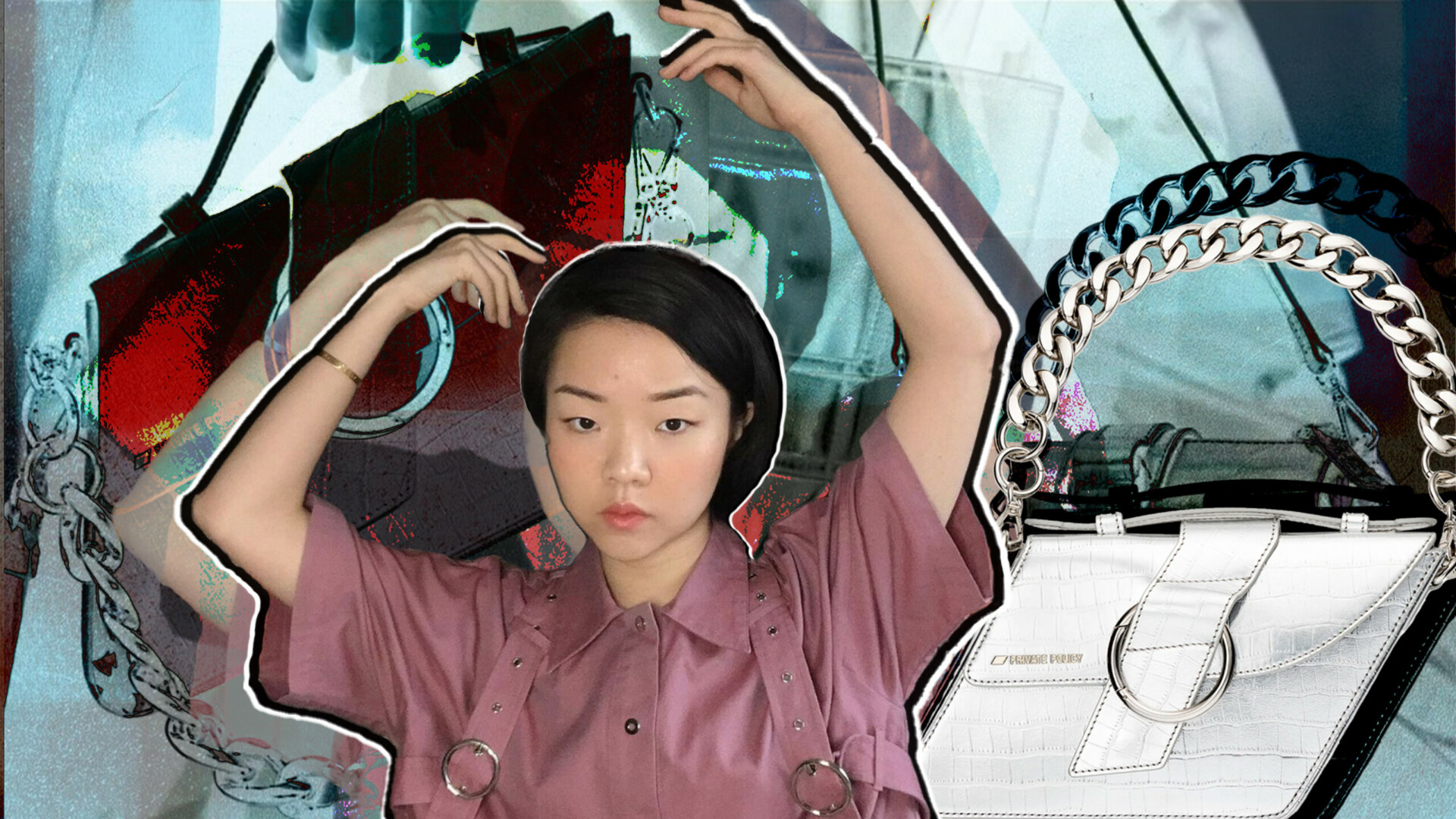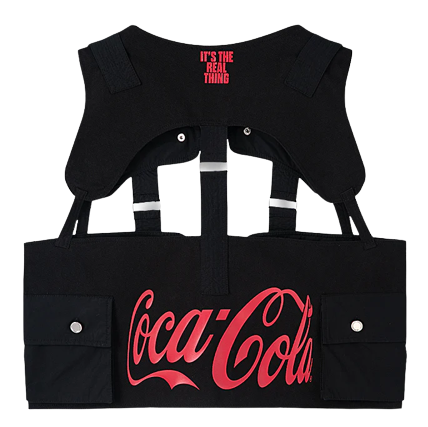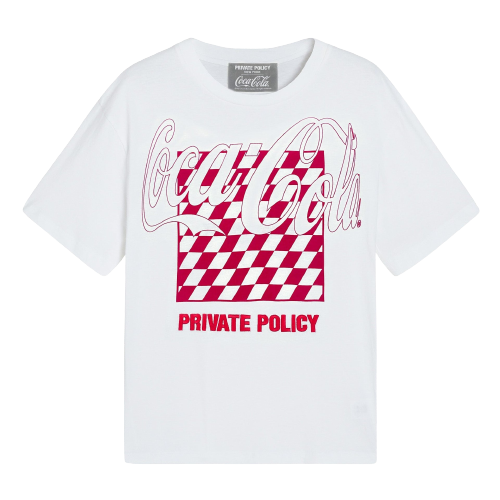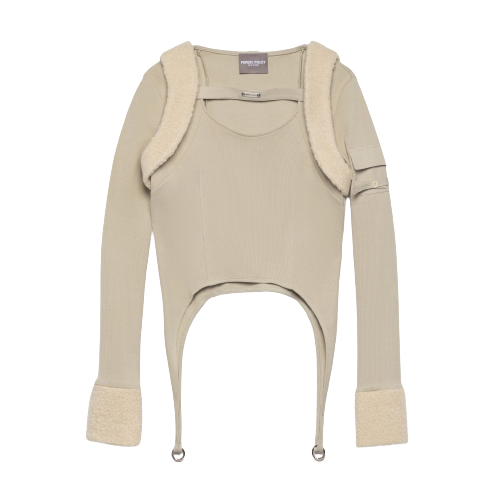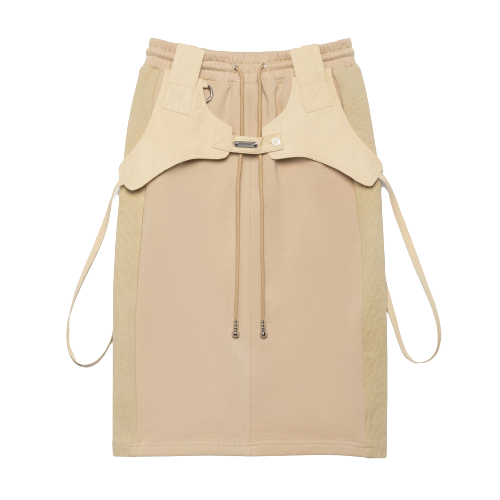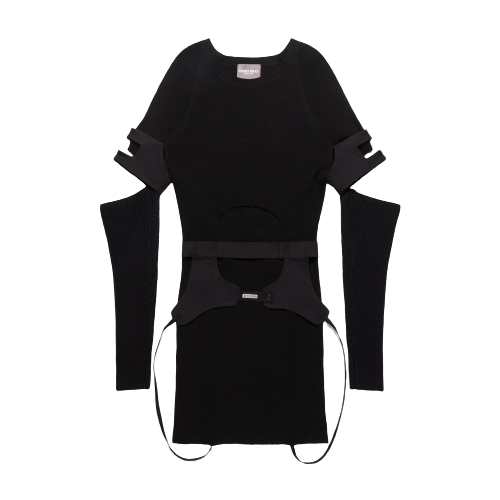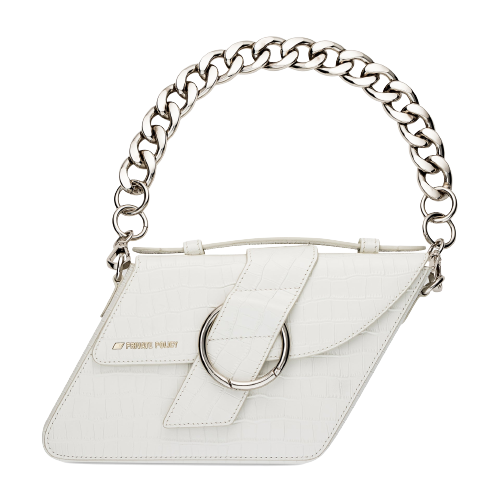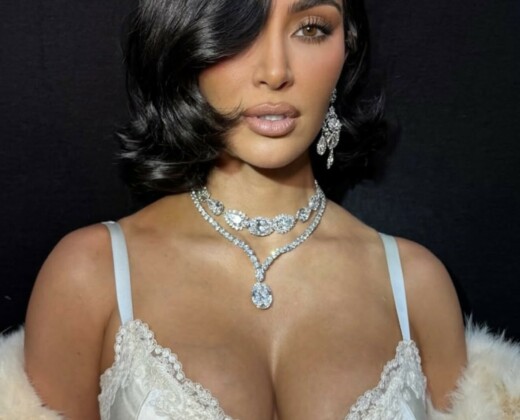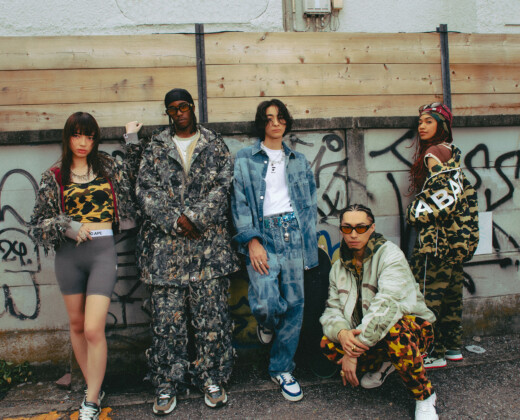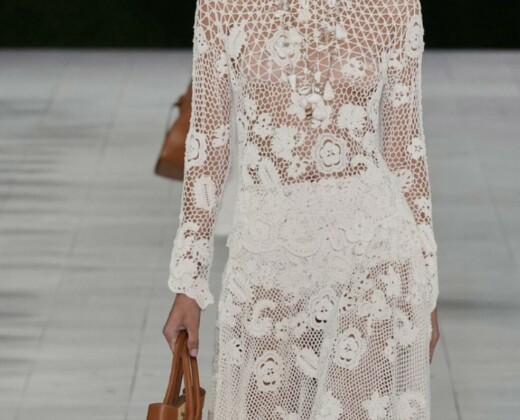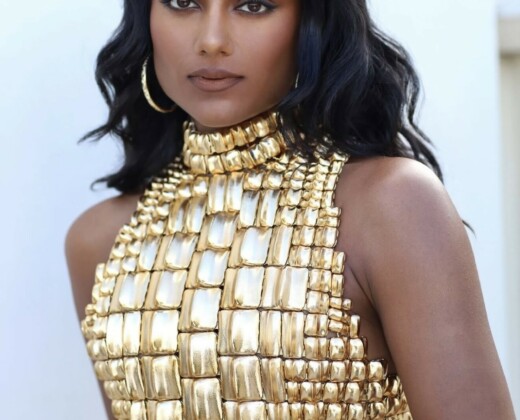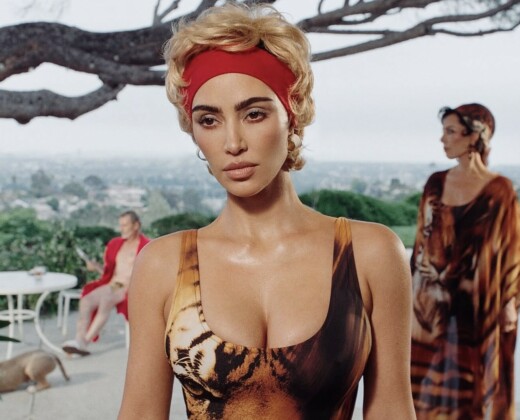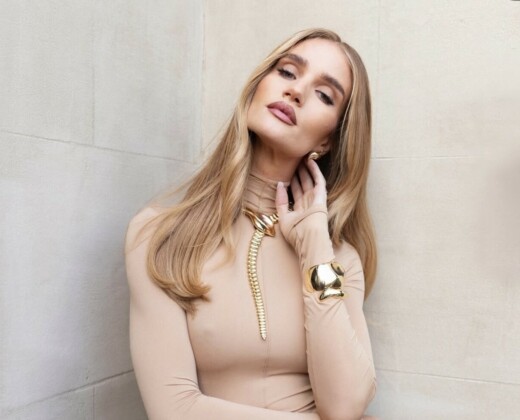Breaking onto the scene with their genderless designs, creative vision, and unorthodox collaborations, is Private Policy, fronted by fashion duo Haoran Li and Siying Qu. Sometimes referred to as ‘the new vanguard’, this trailblazing brand has continuously rattled the industry since their debut, and are a shining example of Gen Z and Millennial brands taking over fashion and breathing life back into it.
We had a virtual catch up with Siying Qu, ½ of the duo behind Private Policy, to talk about everything from genderless fashion, childhood influences, and what the future holds…
So, how did it all start?
It truly started in this little workroom at Parsons, where me and my business partner, Matt, worked side by side through our senior thesis, truly the most stressful time in our college years. And then he goes, oh, do you want to start a brand? I was like yeah, that’s why we go to fashion school, right? Like these four years, finally, are we going to do this? Very quickly, we realized that in school and the internships we did, we had been doing different work in industry already. So we kind of know how it goes. We thought, wait, what can we bring to the table that’s new and fresh for fashion, but also for the world, you know? That’s the time a lot of sustainability discussions started happening more intensely in fashion. We knew that the world didn’t need another clothing brand, because it’s an issue already with overproduction. So we’re like, okay, what can we do, you know?
Eventually, we landed on this idea because of our mutual passion every time we talked about social topics. We would read something in the newspaper, and go, oh my gosh, do you know what’s happening across the world? And it affected us. We were influenced by somewhere else within our globalized system of a world. Our eyes lit up. So we go, okay, why not use our inspiration from these kinds of topics, and then translate it into a fashion collection and use our platform – the power of fashion, right? To raise awareness and truly do something we care about. You know, on the market especially, there’s not really a fashion brand focused on anything like that. We saw that the customers in stores or people we talked to, young people who love fashion, sometimes they feel like they don’t have a clothing brand that truly aligns with what they stand for socially. So then we’re like, okay, let’s do this!
“Maybe it’s okay if you’re doing something that the industry doesn’t understand a hundred percent yet. If it makes sense to us, if we come from a positive angle, why not do it?”
Siying Qu – Private Policy
I really love what you guys stand for. Could you tell us a bit more about what you stand for and how you bring that into fashion? How does the creative process work?
We always say our brands creative process is similar to a newspaper, or like a press outlet. In the beginning, we see our team members, we tell them to go out and research – like reporters – go out and talk with people, go online, read and see what the topics out there are. The job is to find a topic that at that moment, that season, we find the most relatable and intriguing to us. Then from there, just like a reporter, you then research even deeper. We always say, when we do the show and do a collection, that’s when we ‘publish’ the newspaper. This is very important to our creative process because instead of giving an answer or result or saying this is right or wrong, like a reporter, your job is to truly present what’s going on, but through a specific and interesting perspective. So, for example, in the past, we have talked about things like, you know, peace. What does peace stand for? We used the angle of Noah’s Ark, because that’s where that dove symbol came from, right? With that, it was a fresh new perspective. The story of Noah’s Ark is about saving all the animals, today, we don’t think about peace that way, we just think about peace for humans. So, in the midst of sustainability discourse, I think that’s why that topic – that angle – became relatable and very intriguing to us.
When it comes to the fashion design part of it, we really think about it just like any fashion collection. There is a concept, and we get inspired by it. In a way, we conceptualize an abstract theme or idea, into visual things like fabric, colours, texture, and then think about prints, think about the cultural references of symbols, like the dove. Also, colours bring out mood, for that collection, we started with a gray, black and white feeling – this pressure of, you know, the world going a little crazy, we feel a little dark. Then we end the collection with colors like pink and orange, very energetic, hopeful colours. A lot of these fashion elements already speak to a lot of these feelings and then this immediate, almost visual power that the social topics make us feel, we want to use to inspire people to be interested. The goal is that then they will be like, oh, I never thought about peace in that way. For another collection, we talk about the world of fungi and mushroom mycelium, and they go start to research about it. So, it becomes this nice community, like full circle, it’s really great.
What you guys stand for and the creative process behind it is just so clever. Private Policy is doing really well – it’s an exciting time. You’ve got Hailey Bieber and all these really cool artists, but also just exceptional designs and really cool runway shows. When do you feel was the moment that it really started to take off for you?
I think it’s really every little step at a time. I will say for us, as creators, as a brand, we felt the moment really clicked when we realized, there are a lot of rules in the fashion industry and in this world in general and, maybe, we don’t have to follow everything that’s already been done. Maybe it’s okay if you’re doing something that the industry doesn’t understand a hundred percent yet. If it makes sense to us, if we come from a positive angle, why not do it?
That’s where the click happened and we went, okay, let’s create things. Not only on the design side, but also in business and marketing, how we look at it, maybe more in a human way instead of like, oh my gosh, what are the numbers? How much are we making this quarter? Now we’re just like, let’s do something fun! If people enjoy it, they’re going to buy it. They’re going to want to support it. So that mentality, that switch, made us go okay, let’s do something we truly believe in. I think that’s the moment the brand started to make a lot more sense to a lot of people because now they’re enjoying it first and they go, okay, I like this – they become more accepting of the other ideas we are bringing.
It can be really hard, especially for creatives that have to switch between the business mindset and the creative mindset, people don’t actually realize it takes up so much of your time building the business side of it. How have you found that process?
There are moments we go, is it going to work? Oh no, this is something we’ve never done. My business partner and I, we both are Fashion Design Majors so we don’t have a business degree. We grew up in families that were entrepreneurs, but at the same time, sometimes we just feel so insecure. We’re like, Oh my gosh, are we making a good business decision. There definitely have been times we’ve paid for mistakes or things just didn’t happen. It’s so challenging. It’s because fashion is such a detailed business for a brand. Every little thing counts.
We handle the full circle, from designing to then making it and then presenting it. And then going to the business end of selling it and marketing it. In that process too, we can bring that creative mindset. We can bring it to the business world and do the business side in a creative way. For example, the biggest thing for a lot of entrepreneurs who are starting a fashion brand is budget, right? How do you deal with that? We started to think about it creatively, how to save money while still creating something that’s interesting and new and fresh for people to see and still get our end goal. We also think about how things have been done in the industry before and find that it doesn’t quite work out for us. So, how do we creatively change that by knowing our audience, knowing who would wear our designs. All of that started to made us understand it’s not as scary as it first seemed. Very importantly, we’ve learnt to ask for help, to not do everything. Now we go, okay, let’s go to the experts who have done this before and ask for their advice and then we see how it fits in with our brand development.






You collaborated with Coca-Cola too – how did that come about?
Yes, that’s what I mean by going to ask for support. Getting to collab with huge brands like Coca-Cola, who I truly grew up knowing as one of the biggest brands I used to really love. A lot of these things are icons of the modern times, right? I think, because we stay so genuine to our brand mission and our communities, Coca-Cola must’ve seen us somewhere and they reached out to us and said, do you want to collaborate? And then we’re like, sure, let’s do something. That’s also the moment we realized our power to bring a legacy brand like Coca-Cola to the millennial and Gen Z audience. That’s something we’ve realized we’re really good at. Also, we love doing collaborations with companies from another industry, like Coca-Cola that specialize in soft drinks, or how we just did a collab with this winery doing a label design. In return, we get a much bigger platform to discuss the things that matter to us.
Who were your creative influences growing up? Who were your role models?
Wow. I would say for me personally, I actually grew up not knowing a lot about fashion. The very start of me understanding fashion is through these two designers, which when I think back, I realize shaped how I think about fashion. One is Vivienne Westwood. My mom got me this coffee table book about her when I was 12. So, it’s very interesting to see this very provocative, very strong, loud design. I was like, wow, this is so cool. Fashion is so awesome. The other designer is another brand, Versace. It’s also very interesting to see how he brought life between you know, celebrity culture with fashion and with his cultural background, and then his usage of actually really smart branding and logos. I think those two designers secretly shaped how I see fashion, why I see the possibility of mixing the artsy world with the business world and culture and social topics.
You guys are very ahead of the curve. How does gender influence your work? And why is genderless fashion so important to you?
It started when we realized our friends are shopping like, ‘cross gender’ in department stores, right? I would love to go to the men’s section just out of interest of the pockets they get. My business partner, who identifies as a guy, would want to go to the women’s section for the colors, for the cool textures. That’s the moment we came together and thought why do we have to label clothes one gender or the other when our whole idea for fashion is about giving people freedom, right? It’s about empowering people, not about putting people in boxes. We started the business in this way and we realized the whole industry is built in such a rigid men’s or women’s way. We think it’s very important to say it’s genderless because sometimes people go oh, then why don’t you just have guys wearing womenswear or girls wearing menswear, but we think it makes a difference to call it genderless because we want our audience to know that it’s for everyone, you’re not wearing somebody else’s clothes. You’re wearing something that’s meant for you.
Who’s been the coolest person you’ve worked with so far?
Oh my gosh, so many… I think always just in our studio we’ll hear screams about someone wearing the clothes that we really love. Like when Dua Lipa wore a bag. I love when other creative minds understand and even fall in love with our design. Then, also with the collaborations, it’s great to see other successful mega companies recognize us and support us.
What is it about New York that makes it a great base for your brand?
I think New York is one of my favorite cities around the world for sure. It has this energy, I always say it’s a hustler energy, everything’s possible. You hear all these stories about people getting a crazy dream job just at a coffee shop meeting someone, just pitching right there. We love it. Another important thing was New York also influenced our brand with the social topics because of the many protests, social movements, civil rights movements, equality movements, even recently with the whole Occupy Wall Street movement. All of these things we see happening in different parts of the city and the history of the people, you know, being brave and standing up for what they believe. At the same time, we really want to bring this energy around the world. Wherever we go to cities like London, Paris and Shanghai, we always see that energy, in a lot of different ways. We want to do more collaborations with local artists in these cities.
What does the future hold for Private Policy? Have you got any exciting things coming up that you can tell us about?
Yes, actually going off what I said about these different cities, my dream for next year is to do a European tour of Private Policy. The idea is to go to these cities and then do pop ups in stores who may like our design and then collaborate with local musicians, DJs, painters, and really show the power of a community. Private Policy events and parties bringing the fun, and then the social discussions behind the brand to other cities around Europe and around the US. Also, we really value these in-person experiences now after COVID, which you know, we really took for granted. We really want to build more personal connections with our collaborators, fans, and audiences all around the world.
Words By Giuliana Zamudio
Header Image: Arundhati Das


